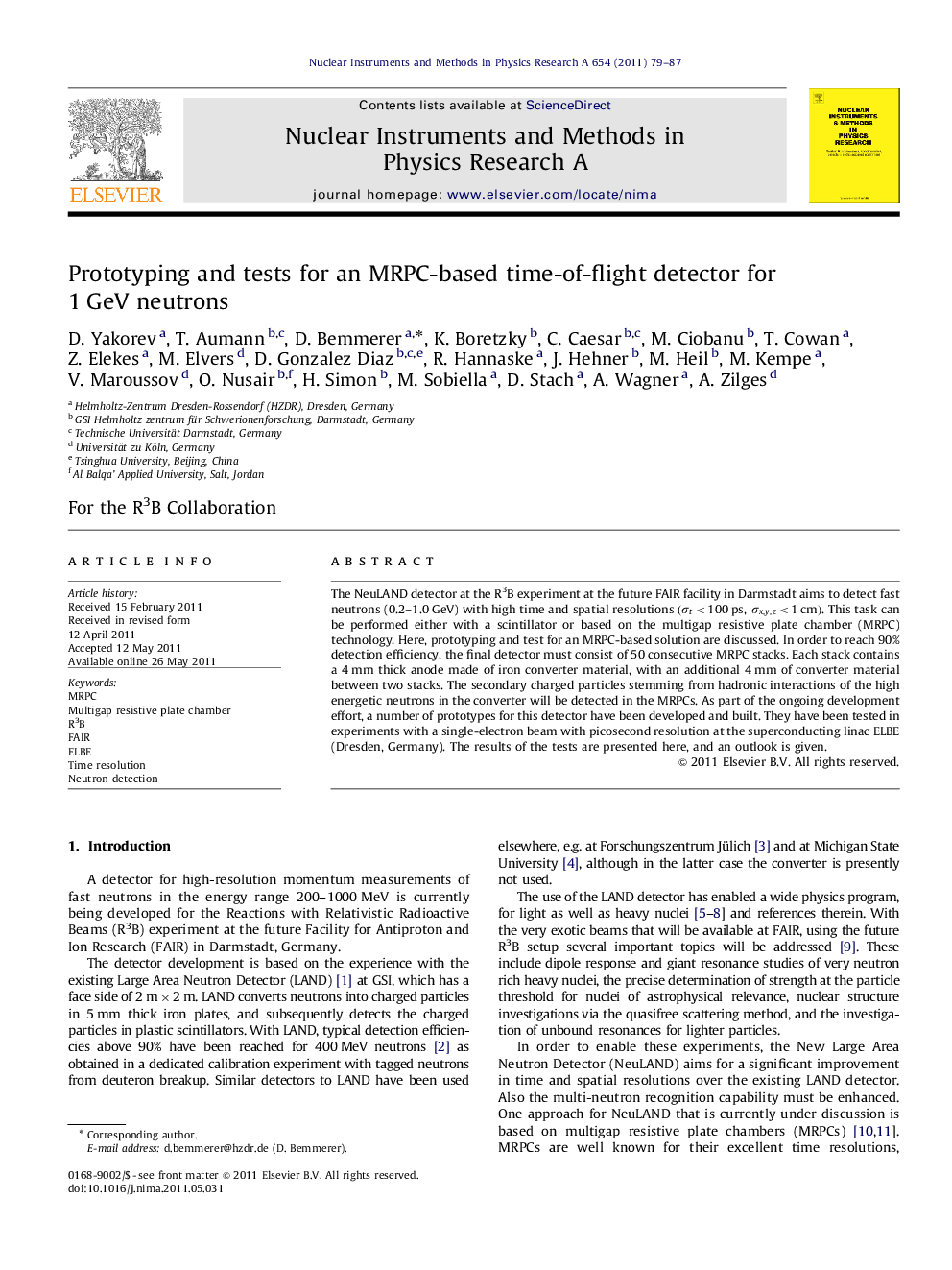| Article ID | Journal | Published Year | Pages | File Type |
|---|---|---|---|---|
| 1824228 | Nuclear Instruments and Methods in Physics Research Section A: Accelerators, Spectrometers, Detectors and Associated Equipment | 2011 | 9 Pages |
Abstract
The NeuLAND detector at the R3B experiment at the future FAIR facility in Darmstadt aims to detect fast neutrons (0.2-1.0Â GeV) with high time and spatial resolutions (Ït<100ps,Ïx,y,z<1cm). This task can be performed either with a scintillator or based on the multigap resistive plate chamber (MRPC) technology. Here, prototyping and test for an MRPC-based solution are discussed. In order to reach 90% detection efficiency, the final detector must consist of 50 consecutive MRPC stacks. Each stack contains a 4Â mm thick anode made of iron converter material, with an additional 4Â mm of converter material between two stacks. The secondary charged particles stemming from hadronic interactions of the high energetic neutrons in the converter will be detected in the MRPCs. As part of the ongoing development effort, a number of prototypes for this detector have been developed and built. They have been tested in experiments with a single-electron beam with picosecond resolution at the superconducting linac ELBE (Dresden, Germany). The results of the tests are presented here, and an outlook is given.
Related Topics
Physical Sciences and Engineering
Physics and Astronomy
Instrumentation
Authors
D. Yakorev, T. Aumann, D. Bemmerer, K. Boretzky, C. Caesar, M. Ciobanu, T. Cowan, Z. Elekes, M. Elvers, D. Gonzalez Diaz, R. Hannaske, J. Hehner, M. Heil, M. Kempe, V. Maroussov, O. Nusair, H. Simon, M. Sobiella, A. Zilges,
